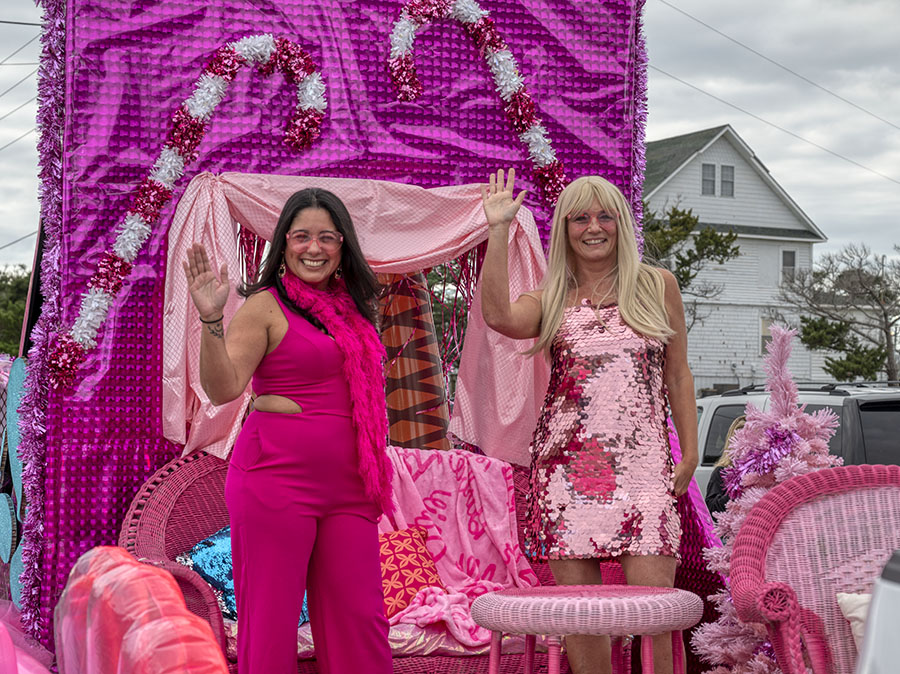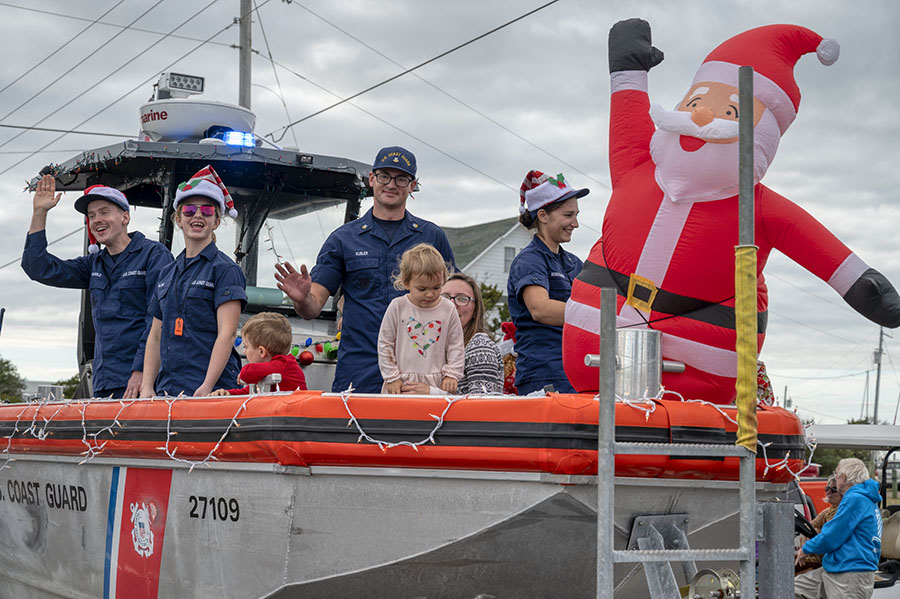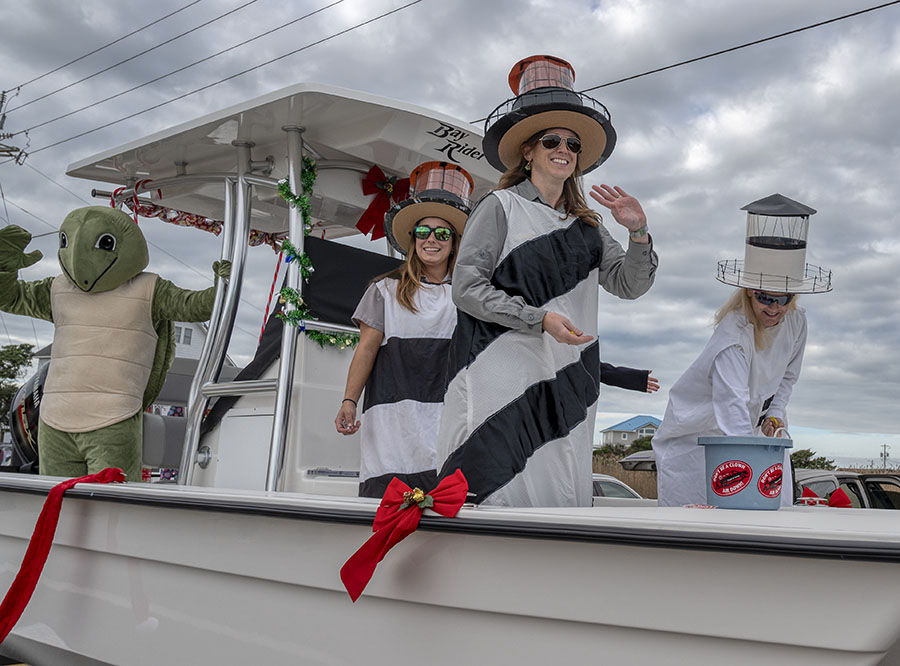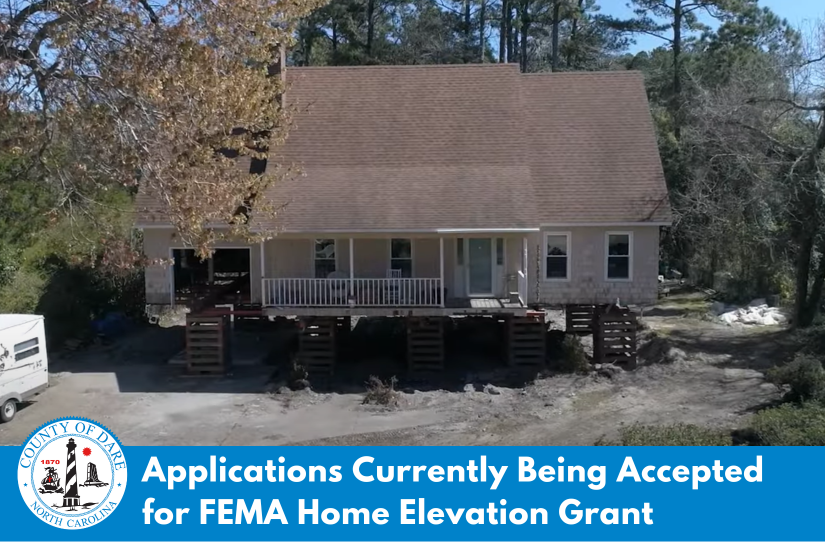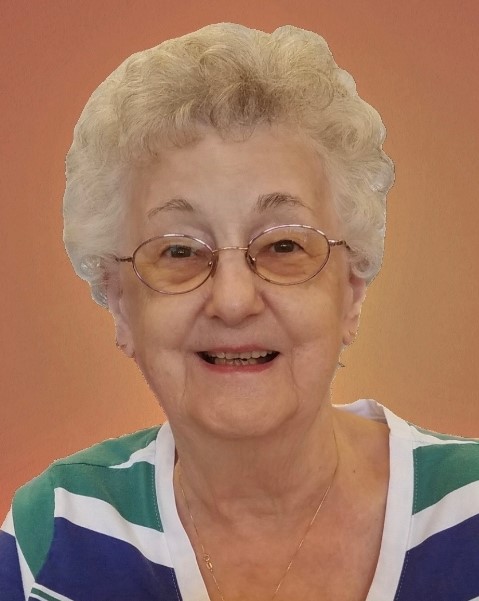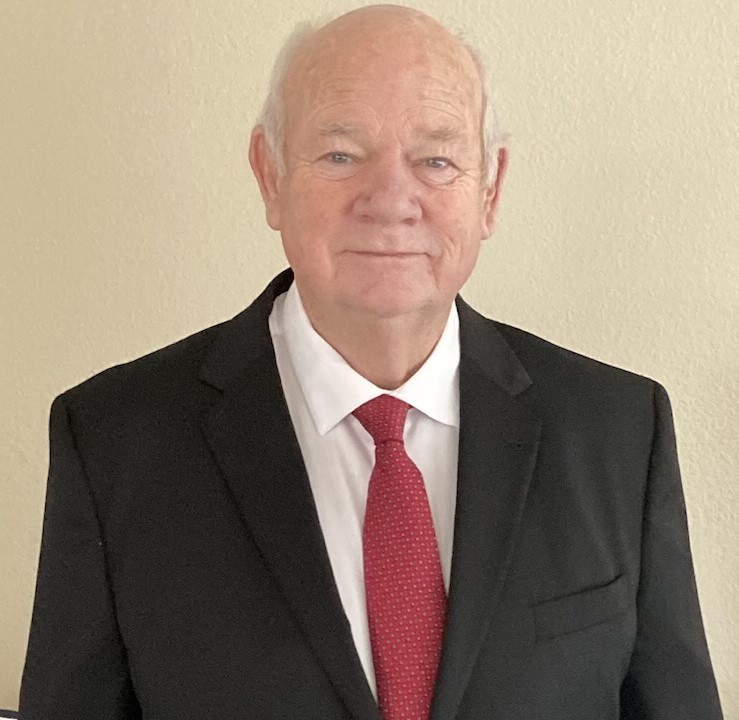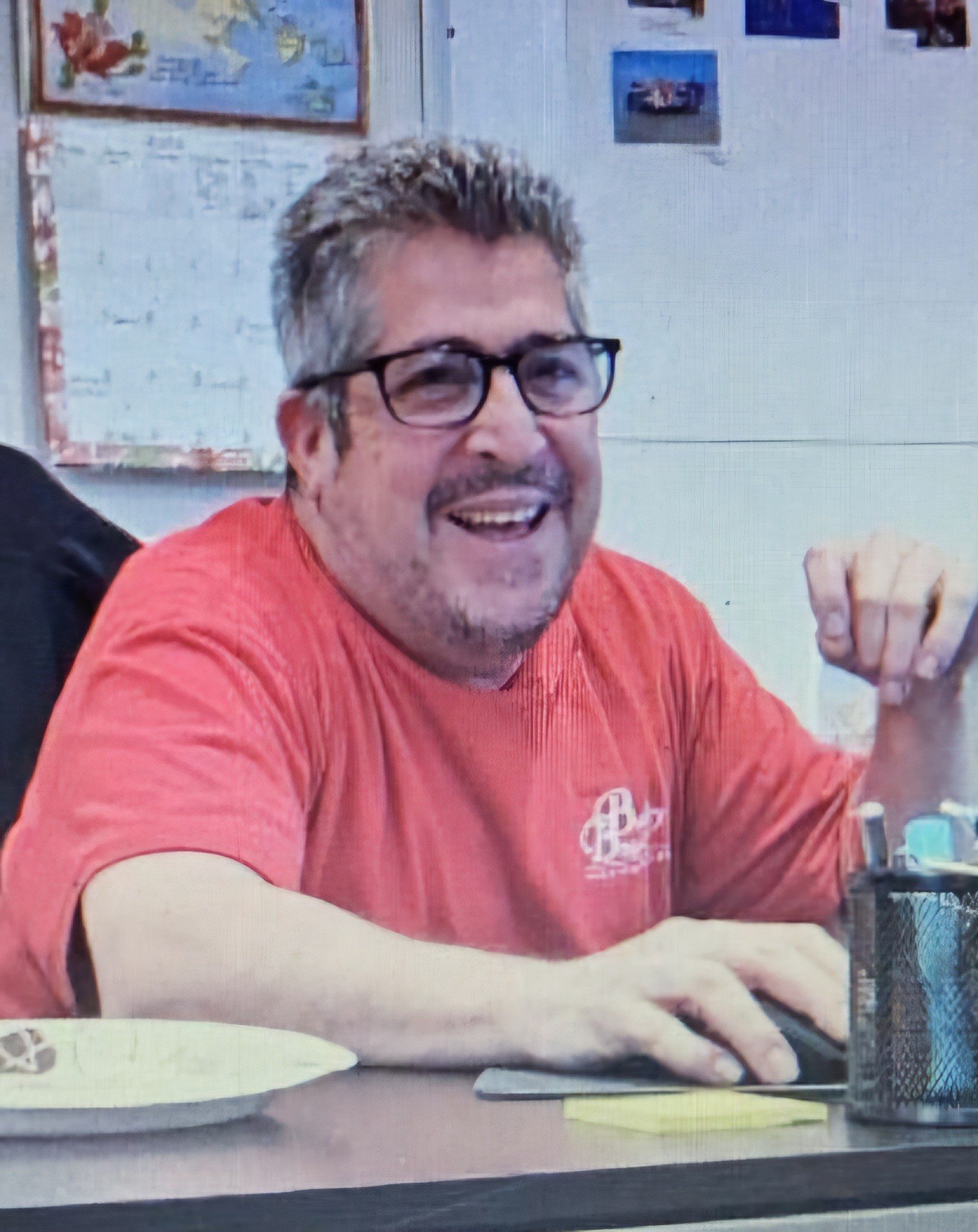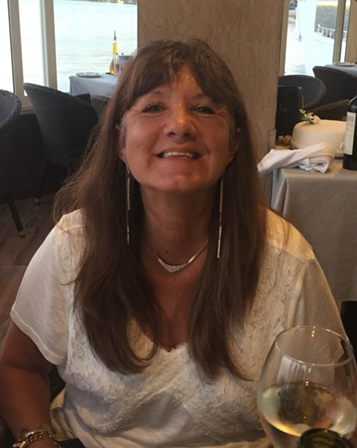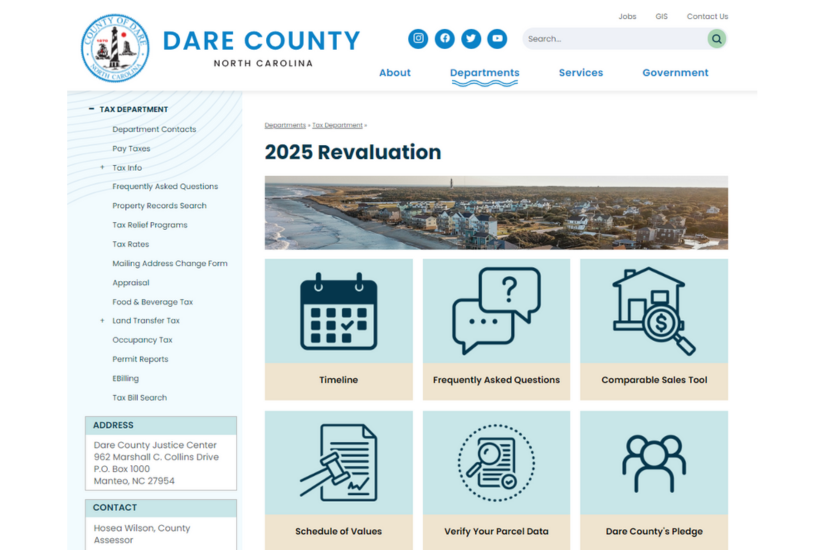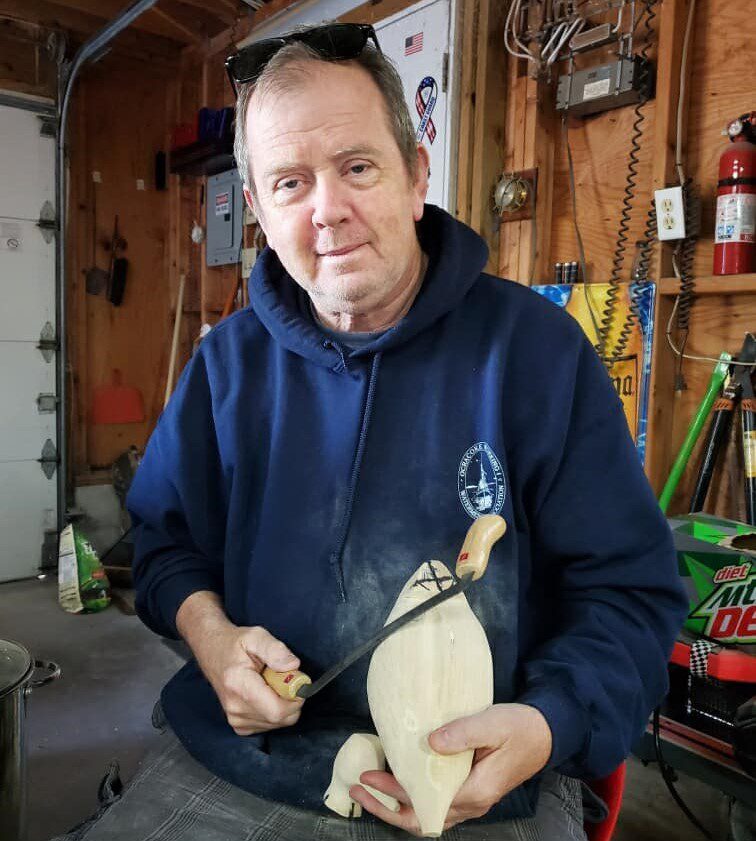Feathered storm victims get new home in Buxton ….WITH SLIDE SHOW
Gusty winds on Friday afternoon destroyed the home of a family in the Flowers Ridge area of Buxton, as Tropical Storm Andrea passed through the area.
Three fledgling ospreys took a terrifying ride when their nest broke loose from its mooring high atop a tree, crashing to the ground.
It was Kim Mosher of Flowers Ridge Road who first noticed the nest had disappeared when a mid-afternoon squall line passed over the island.
She and her husband, Kevin McCabe, called Lou Browning of Hatteras Island Wildlife Rescue, who responded immediately to the scene of the crisis. He and neighbor Tim Waterfield trekked quickly into the dense, marshy thicket to locate the frightened clutch and evaluate their condition.
The men emerged with three osprey chicks. While Lou transported and treated the injured family at his Hatteras Island Wildlife Rescue center, neighbors rallied to construct and erect a new makeshift home for the birds.
Waterfield and McCabe, both of Flowers Ridge Road, wasted no time cobbling parts together, while Tom Garrison of Ridge Trail dug a foundation for the new home in Leroy Carroll’s side lawn.
McCabe and Waterfield knew what to do because they had been down this road with an osprey family before. That incident involved the same mother.
During a thunderstorm about 10 or 12 years ago, the mother osprey’s nest had fallen into a pond behind Mosher and McCabe’s home. McCabe and Waterfield rescued the chicks and constructed a new home for them.
The mother returned and has returned every year since, once with a new male partner after hers disappeared, to nest in the area.
The neighbors worked quickly. The new nest is a Rubbermaid storage bin cut in half and braced with a wood frame that is attached atop a tall pole. It was filled with sticks, the osprey’s nesting material of choice.
The new nest was erected in about an hour — in time for Browning’s speedy return with two of the chicks. The third was kept in the clinic for further treatment and, unfortunately, was too seriously injured and had to be euthanized.
McCabe said the mother hung around in a nearby tree to observe the construction of her new home. After the chicks were placed in the new nest, she waited and hour or so before returning to them.
The parents have apparently accepted and are adjusting to their strange new digs now housing their remaining two chicks that are still several weeks from their first flight under their own power.
Ospreys are large birds of prey that nest along coastal areas. They have white heads with a broad, dark band through the eye and cheek, and brown backs and wings.
They are also called “fish hawks,” since their diet consists mostly of fish that they catch by hovering high over the water and then diving swiftly and expertly to catch the prey with their talons. You may well have noticed them fishing along the Hatteras and Ocracoke beaches in the spring and summer.
On Hatteras, they nest mostly in tall, dead trees, but they have also been known to nest on manmade structures, such as platforms on power poles or on top of channel markers.
The nests are big, bulky affairs, made mostly from sticks.
The birds mate for life and return year after year to the same place to nest and raise their chicks.
McCabe and Mosher feel like they know this mother osprey quite well, though they think she lost her original mate some years back and returned with a new one.
“I’ve known her for 12, 13, or 14 years,” McCabe said. “She’s got a feather on her wing that I use to identify her….She’s a good mother and has been through a lot.
The ospreys leave the area for the winter, but McCabe says they return faithfully on or about March 1 of each year.
(Irene Nolan contributed to this article.)
FOR MORE INFORMATION
Lou Browning started Hatteras Island Wildlife Rescue several years ago. Based in Frisco, HIWR is dependent on donations for its work with island wildlife. More information is available at http://www.hiwr.us/.
Also on this website, you can see the osprey cam, which is focused on a nest in Frisco near the rescue center.
You can read about some of the recent rescue cases on Facebook at https://www.facebook.com/pages/Hatteras-Island-Wildlife-Rehabilitation/316636688958
CLICK HERE TO VIEW SLIDE SHOW





